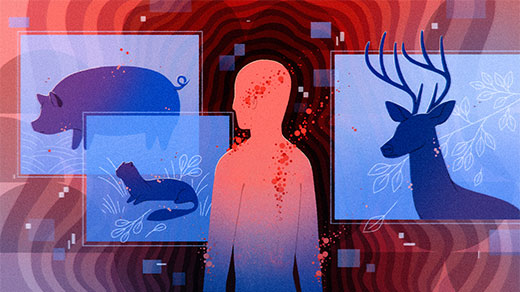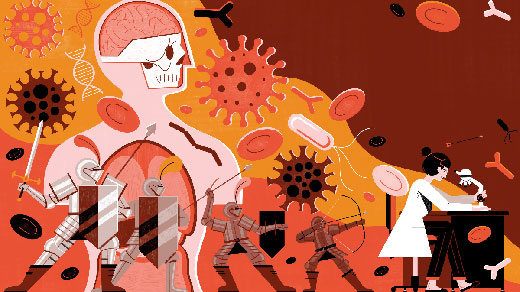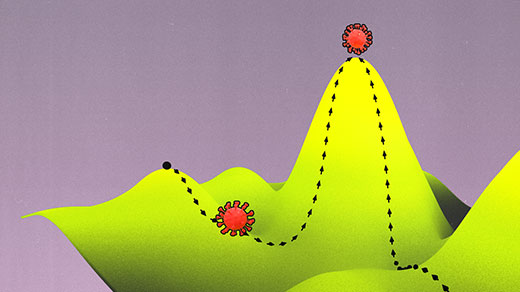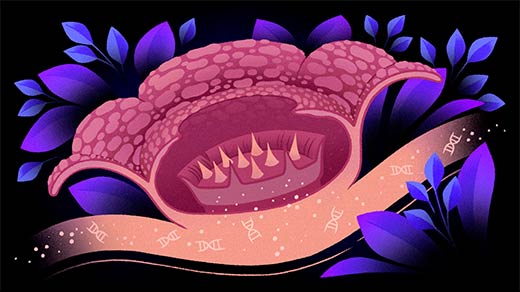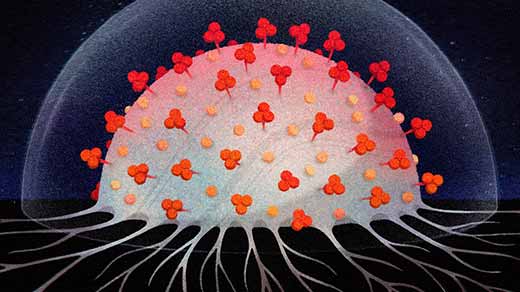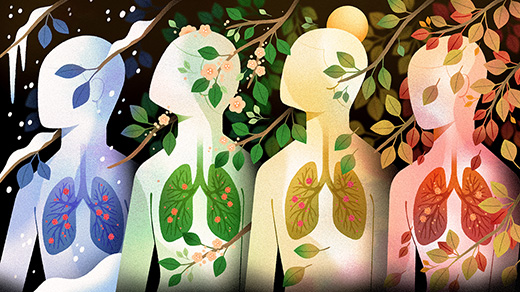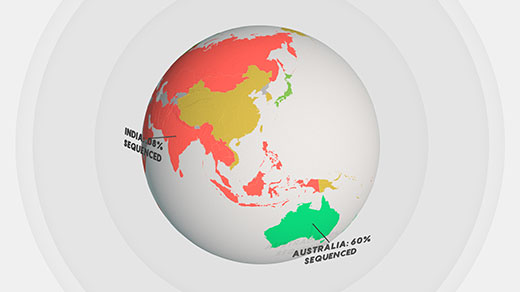What's up in
COVID-19
Latest Articles
How Many Microbes Does It Take to Make You Sick?
Exposure to a virus isn’t an all-or-nothing proposition. The concept of “infectious dose” suggests ways to keep ourselves safer from harm.
What Happens When We Give Animals Our Diseases?
While it’s understandable to focus on the diseases affecting humans, it’s important to study how our illnesses may affect animals.
Why Is Inflammation a Dangerous Necessity?
The immune system protects us from a full spectrum of pathogens, but without balance, it can end up hurting us over time, too. The immunologist Shruti Naik explains how our defenses can turn on us.
Evolution ‘Landscapes’ Predict What’s Next for COVID Virus
Studies that map the adaptive value of viral mutations hint at how the COVID-19 pandemic might progress next.
The Year in Biology
The detailed understanding of brains and multicellular bodies reached new heights this year, while the genomes of the COVID-19 virus and various organisms yielded more surprises.
Will We Ever Get Rid of COVID-19?
No matter how much we’d like to eradicate SARS-CoV-2, it may be better to settle for other forms of control.
How ‘Long COVID’ Keeps Us Sick
Other diseases with long-term symptoms can help us understand how COVID can affect us long after the virus itself is gone.
A Lack of COVID-19 Genomes Could Prolong the Pandemic
Genomic surveillance of the SARS-CoV-2 virus can help control the current pandemic and prevent future ones. But the process is marred by insufficient data and geographic inequities.
Researchers Read the Sugary ‘Language’ on Cell Surfaces
Glycans, the complex sugars that stud cellular surfaces, are like a language that life uses to mediate vital interactions. Researchers are learning how to read their meaning.

